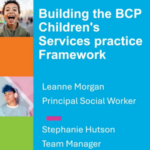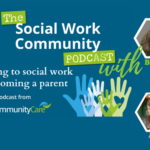Bold document
The biggest review of prostitution in 50 years, published last week by the government, is a bold document. It challenges the long-held view that prostitution is acceptable in our society and clearly states that paying a minor for sex is child abuse.
“We will not eradicate prostitution overnight, but we must not condone this exploitative industry,” said Home Office minister Fiona Mactaggart, launching the strategy.
“This is the first public statement saying it is wrong to buy women and children for sex. It’s a very important milestone,” says Maddy Coy, who manages the Lilith project, which campaigns to improve services for women experiencing violence, and is part of charity Eaves Housing for Women.
According to the Home Office, 95 per cent of street prostitutes use heroin or crack. Forty five per cent of people involved in prostitution report being sexually abused by a family member. Seventy per cent spent time in care.
Glamour
But the myths and stereotypes that prostitution is somehow glamorous persist.
Media coverage of the prostitution strategy – and not just in the tabloids – has featured large photographs of attractive young women in short skirts. It has focused on licensed red-light zones, which are being ruled out, and so-called mini-brothels, where two or three women will be able to work together for safety. These two elements are a minor part of the strategy.
“Prostitution is not about Julia Roberts in Pretty Woman. It’s exceptionally dangerous and harmful,” says Ginny Wilkinson, principal practice and policy officer and lead on sexual exploitation at children’s charity Barnardo’s.
“Portrayal of prostitution tends to be sentimental,” agrees a spokesperson for The Children’s Society.
Both charities, who have worked with and campaigned on behalf of sexually exploited children since the mid 90s, welcome the new document.
Long haul
The strategy is unequivocal.
“Street prostitution is not an activity that we can tolerate in our towns and cities. Nor can we tolerate any form of commercial sexual exploitation, whether it takes place on the street, behind the doors of a massage parlour or in a private residence,” it reads.
The strategy aims to reduce demand for prostitution by raising awareness of the realities. In particular the government wants people to understand that paying for sex with a child is a crime.
“Informing the public, and challenging attitudes, will be a crucial step towards tackling the demand for prostitution,” says the strategy.
This could be a long haul. The number of UK men using prostitutes doubled between 1990 and 2000, a 2005 academic study found.
The government wants to prevent people, especially children, from becoming prostitutes, and offers more support for those already involved, including drug treatment programmes.
It also promises tougher penalties for punters and people paying for sex.
The guidance Safeguarding children involved in prostitution will be updated.
Protection
Identifying children who need protection, monitoring their progress and supporting them is vital and the common assessment framework and new information sharing will help, says the government.
Schools will be important in teaching children about the realities and dangers of prostitution.
Targeted intervention for children particularly at risk of being sexually exploited, including looked-after children and care leavers, will be introduced, although there is not much detail on this yet.
Barnardo’s and The Children’s Society both point out there is a lot more policy and practice needed, particularly for work with looked-after children. Detailed guidance from the Department for Education and Skills is expected to follow.
The Children’s Society is pleased that the strategy recommends provision of refuges and other services for young runaways, to divert vulnerable young people from prostitution. The Society has repeatedly called for a network of refuges for young runaways.
Guidance on safeguarding children involved in prostitution emphasises that young people should be treated primarily as victims of abuse, not criminals.
Since it was issued in 2000, cautions and prosecutions of young people involved in prostitution have dropped and there were only three convictions in England and Wales in 2004.
Children will only be prosecuted “in the most exceptional circumstances – as a last resort where services fail to engage with young people and they return repeatedly to the streets,” says the strategy.
It notes there are some multi-agency projects tackling the sexual exploitation of vulnerable children, including Awaken in Blackpool.
But the government emphasises that children’s trusts should provide these services – but does not offer cash to fund them.
Some of the worst examples of sexual exploitation, says the strategy, are in off street prostitution, behind closed doors. Although invisible, off street prostitution must not be underestimated, says the government. It admits more research is needed in this area, to map out the scale of the problem.
Cost
The consensus from the charities is that the government’s prostitution strategy deserves praise for being progressive and forward-looking.
But the issue for local authorities looks set to be the usual one – paying for new services. The strategy makes it clear that it will be councils who are expected to set up and fund new services to divert children and adults from prostitution and to support those who are already involved – but with no extra money. Only a fortnight ago the government set out how it expects councils to provide more services working with antisocial families, with only start-up funds provided. Funds for working with children and families are already tightly squeezed, according to the Association of Directors of Social Services.
An impressive strategy on prostitution, but how do we pay for it is the question local government is sure to ask.



 Bournemouth, Christchurch and Poole
Bournemouth, Christchurch and Poole  Hampshire County Council
Hampshire County Council  Oxfordshire County Council
Oxfordshire County Council  South Gloucestershire Council
South Gloucestershire Council  Wokingham Borough Council
Wokingham Borough Council  Harnessing social work values to shape your career pathway
Harnessing social work values to shape your career pathway  Webinar: building a practice framework with the influence of practitioner voice
Webinar: building a practice framework with the influence of practitioner voice  ‘They don’t have to retell their story’: building long-lasting relationships with children and young people
‘They don’t have to retell their story’: building long-lasting relationships with children and young people  Podcast: returning to social work after becoming a first-time parent
Podcast: returning to social work after becoming a first-time parent  Workforce Insights – showcasing a selection of the sector’s top recruiters
Workforce Insights – showcasing a selection of the sector’s top recruiters  Free CPD on Parkinson’s for health and social care staff
Free CPD on Parkinson’s for health and social care staff 

 Facebook
Facebook X
X LinkedIn
LinkedIn Instagram
Instagram
Comments are closed.